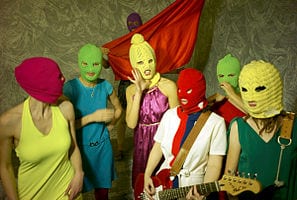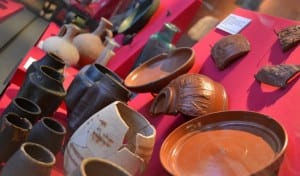Whilst considering costume and props for our performance piece, we came to the realisation that in fact some elements of our piece could be likened to that of feminist collective, Pussy Riot. Having decided that balaclavas would be a great statement against 1920’s era flapper dresses for costume, it dawned on us that we had seen something similar on the news in relation to the Russian group. Pussy Riot is known for their provocative performances in public places, similar to those of Lone Twin, a collective from which we have taken great inspiration. More recently, however, Pussy Riot has been widely spoken about on the news, due to the arrest of some of their members. There is now an ongoing campaign to free the women, which is discussed in the below video.
Currently two of the members are in prison on charges of ‘hooliganism’, after a performance inside a church during which they condemned the re-election of President Putin in 2012 whilst wearing brightly coloured clothing and balaclavas. This idea of guerrilla-like terrorism is something that obviously has influenced our piece, however whilst Pussy Riot uses their statement clothing and music to portray a very political message, it is our hope that the construction we are creating will lead to something more of a personal realisation for those who view it. Instead of outward discussion of others, we want people to think about themselves and really connect to their roots in terms of their personal historical influences. In this way, whilst connecting to Lincoln as the root of piece, we also want to bring in our personal histories as it were, with the realisation of a building that is effectively the centre of the largest city in the United Kingdom.
Pussy Riot band members
Author: Lacey Cole.

